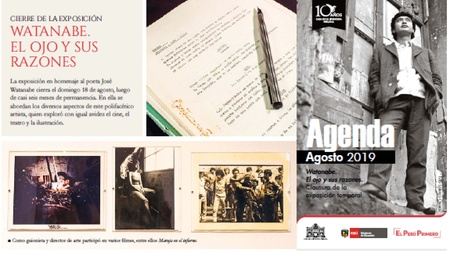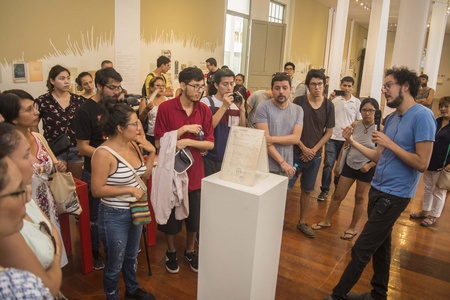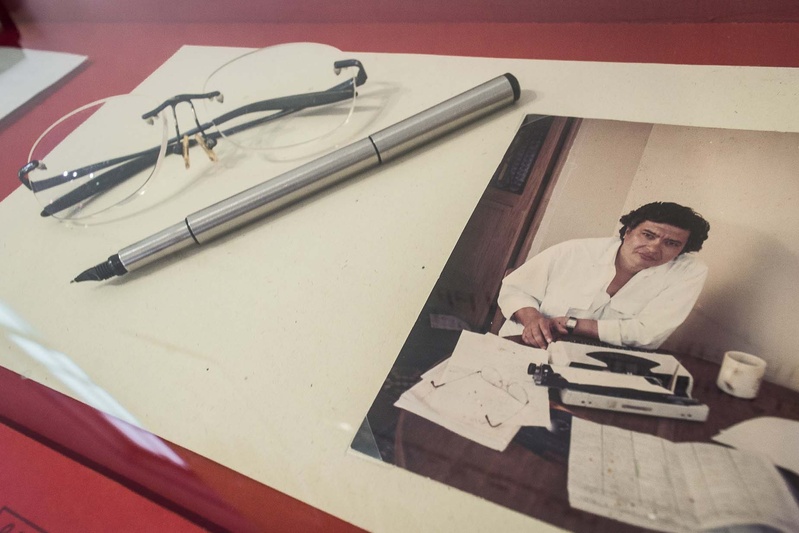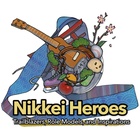Peruvian poetry has produced great names (César Vallejo, César Moro, José Santos Chocano, Blanca Varela and more signatures) among whom is, without a doubt, the Nikkei writer José Watanabe Varas (Laredo, 1945), whose work has achieved influence different creators through their poems, theater, film scripts and children's literature, among other writings. To know the 'planet Watanabe' is to enter a universe that continues to expand.
Books that analyze his life and work, poets who figure in a literary tradition where he is one of its main representatives, cultists of his work and a recent exhibition in his honor, at the House of Peruvian Literature, reflect the vitality of a legacy that It has survived thanks to scholars, readers, friends and family who, in complicity with editors and artists, have produced new works, with diverse interpretations and depths.
How can I not mention, first of all, the book El ombligo en el adobe. Sieges of José Watanabe (Red Table, 2010), by Maribel de Paz 1 , which narrates part of the poet's life and work based on interviews conducted over a period of six years, which was followed by the no less interesting Family Things (Murrup, 2014), by his friend José Li Ning, who breaks down Watanabe's poetic work from a psychiatric perspective. They were joined by the Mexican scholar Tania Favela, with a rigorous and intuitive book.
On the banks of Watanabe
The place is the poem . Approaches to the poetry of José Watanabe (APJ, 2018) is the title of the research that is part of the doctoral thesis of this poet, who has focused on several milestones in the work and life of the Nikkei writer, his frequent themes and influences, where the oriental, western and popular merge, in that refined language that has already been addressed by other scholars of his work, such as Víctor Vich or Diego Alonso Sánchez Barreto.
“Everything I thought about poetry did not agree with what Watanabe did,” explains Favela 2 , who thus remembers his narrative style, his fables and parables. That freedom that he saw in his style, and that others can find in the verses of Martín Adán or Luis Hernández, is a valuable approach for readers who identify some nuances in his literature, in which one can also notice his Japanese edge, to from his contemplative gaze and the cultural references of that country.
For Diego Alonso Sánchez Barreto, who has written about Watanabe's freedom 3 , it is in the collection of poems Things of the Body where you can see “the colloquial power of his way of saying, which exploited the most common details of the life that we often go through without realize it, but that under his gaze they became powerful messages and exquisite reflections on life," explains the poet, who considers the work of the Nikkei author as another way of approaching reality, closer to the so-called "poetry of experience." ”, emerged in Spain.
New spaces
The Watanabe exhibition. The eye and its reasons , exhibited at the House of Peruvian Literature, between February and August 2019, has been one of the greatest profiles of the life of the Laredo poet. Not only did he have the support of family members such as his sister Teresa and his daughters Maya, Issa and Tilsa, among many others, but also the contribution of artists such as Luz María Bedoya and Eduardo Tokeshi, and the curatorship of Rodrigo Vera.

With a large influx of public in the almost half a year of exhibition, it has been important to have a new space for the appreciation of the work of the Nikkei writer, who is always remembered in the Nikkei community (this year, the Peruvian Japanese Association, APJ, organized a conference on the presence of Japan in the work of three Nikkei, including Watanabe, and in 2015 this institution republished, together with Lustra Editores, El huso de la Palabra , in a special edition).

Among the sieges of Watanabe, we cannot ignore the documentary The Guardian of the Ice , by filmmaker Javier Corcuera, from 2014, and the report that NHK 4 , a Japanese television network, did about it in 2017. But it was thanks to the showing of this year that eyes have returned to this emblematic author, through the facsimile edition of Álbum de familia (Casa de la Literatura Peruana, 2019) and events such as the decentralized reading day of his poetic universe, promoted by this same entity and by APJ's Elena Kohatsu Library.
Unexplored territories
This year, an article in the newspaper El País 5 talked about the sea of Nikkei literature that has been developing with different styles and influences. In this “universe of letters” in which a new hybrid sociocultural reality emerges, Watanabe is one of the most discussed characters. For the Nikkei writer Miguel Ángel Vallejo Sameshima, his film scripts (especially that of “Alias la gringa”) “determine much of Peruvian action cinema that is not based on books. And it seems to me that we haven't seen many original scripts of Watanabe's level.”
“In some stories I have sought that fascinated contemplation of everyday life,” adds Vallejo Sameshima, who highlights the simplicity and peculiar sense of humor of this author, who enjoyed making parables about animals and including sententious but shameless reflections on his family environment; in addition to dedicating herself to children's literature, one of her least explored universes. “In Peru there is no criticism of children's books,” says Miguel Ángel, adding that Lavandería de ghosts is an extraordinary text that deserves many theses.
Precisely, of that children's narrative, which has a variety of illustrated titles (twelve children's stories), the last one, published by Peisa in 2017, is titled Leoncio and the veterinary doctor . From that story, this year the theater adaptation Mermaids and Mangers was made, directed by Ana Correa, and with the participation of the Chaski Q'enti group, with a staging that uses theater, singing, puppets and dance. This year, on the occasion of the twelve years since Watanabe's death, the relaunch of the municipal library that bears his name and a raffle of his stories for children were held in Laredo.
Expanding the map
What impact has José Watanabe's work had on Nikkei poets? Although she does not talk about influence, Doris Moromisato does find a common point: the landscape of the rural world. “Watanabe had his Laredo, I had my Chambala, and I think we agree on our references to nature, almost all of our speech is made from contemplation. Watanabe is my brother of metaphors,” says the researcher and poet, adding that for her Watanabe will be the César Vallejo of the 21st century.
“His attitude towards creativity is a contribution worth highlighting; their commitment at the time of creation, correction, and completion. Watanabe was an artist very dedicated to his work,” adds Moromisato. This honesty, which Doris relates to the Nikkei nature, is very valuable, especially if it is opposed to improvisation and egocentrism. The Nikkei poet Juan de la Fuente Umetsu agrees with her and highlights one word: perseverance, which has influenced him as a writer to assume “the inevitable insularity that allows you to find your own rhythm.”
“Watanabe always maintained an authentic search,” explains de la Fuente, who believes that part of his greatness has to do with the view of the East fused with the West. “The intelligence that laughs at its pain, that transcends it, that undertakes the search for the word beyond fashions and trends. Watanabe harmonized or attenuated human pain, giving it a magical dose of humor. The lack became a strength: the characters, the animals and the things were subverted and erected on reality to tell it.”
There is much that remains to be said about the planet Watanabe, its rural landscape, its mythological beings, its ironic gaze and its everyday simplicity. It is up to the new poets, Nikkei or not, to study it, know it and share it, an effort that has been made like a map is drawn to which streets, squares, houses and books are added. “Poetry gives you another different space from which to think,” says Tanial Favela. That seems to be the natural landscape of the planet Watanabe, a “space of silence that we also lack in the midst of noise.”

Grades:
1. “ Maribel De Paz writes a book about the poet José Watanabe ”, ( Social Networks , September 22, 2010)
2. Bryan Paredes, “ Tania Favela: 'Reading Watanabe is finding a space from which to think '”, ( Diario Correo , July 24, 2018)
3. “ José Watanabe: about freedom. The Japanese spirit of the poet from Laredo ”, ( Vallejo & Co. , April 25, 2017)
4. “ José Watanabe: the incredible story of the poet is revealed on Japanese TV ”, ( El Comercio , December 20, 2017)
5. Jacqueline Fowks, “ The sea of 'Nikkei' literature ”, ( El País , July 31, 2019)
© 2019 Javier García Wong-Kit








